Bowel resection
Intestinal resection is an operation to remove part of the small or large intestine. The extent of the intervention depends on the severity of the disease and the prevalence of intestinal lesions.Resection of the intestine is performed to remove the affected area within healthy tissues.After removal of the affected area of the intestine, there are two lumens of the intestine. One leading, the other output. The continuity of the intestinal tube is restored by applying an anastomosis. Thus, the formation of an intestinal seam is made or using special staplers, or the imposed manual intestinal seam is.
Depending on the nature of the lesion, the location, and the size of the lesion, resection can be sectoral, economical, expanded. Also, resections of the colon and rectum in tumors are distinguished.
When the intestine is resected, the part of the mesenteric that attaches the affected area to the peritoneum must be removed. When performing the intervention, the surgeon must be especially careful to prevent the contents of the organ from entering the abdominal cavity.
Small bowel
Small bowel resection is a surgical operation aimed at removing the affected area when treatment by other methods is no longer possible.
It belongs to the category of complex surgical interventions with high risks and is prescribed if there are good reasons for that.
The decision to perform a resection of the small intestine and the surgical technique of its implementation is made by a specialist in each case individually.
What are the indications for small bowel resection?
- injuries and other mechanical injuries;
- ulcer, bleeding inside the intestine, severe infection;
- cancer of one or more departments;
- polyposis as a precancerous condition;
- vascular occlusion (thrombosis) - intestinal infarction; Crohn's disease;
- phytobezoars (foreign bodies in the intestine from plant residues);
- acute adhesive intestinal obstruction;
- peritoneal carcinomatosis (presence of multiple metastases in the abdominal cavity);
- short bowel syndrome;
- protrusion of the wall of the small intestine (Meckel's diverticulum);
- the need for bowel reconstruction in other operations on the abdominal organs.
How is the preparation for the operation?
At the planned operation, when there is enough time to prepare, the patient undergoes all necessary examinations, including laboratory tests of blood and urine, ECG, examination by a surgeon, cardiologist, dentist, therapist, ultrasound examination, and CT of the abdominal cavity. In the presence of other chronic diseases, the consultation of experts of other directions can be appointed.
If necessary, the emergency resection is the amount of preoperative preparation that depends on vital signs and contains the minimum necessary for safe surgery. The doctor on duty examines the patient, performs CT and ultrasound of the abdominal cavity, blood and urine collection is performed as quickly as possible (urgently).
How is a small bowel resection performed?
The operation is performed under general anesthesia and lasts an average of about 1.5-3 hours. After the surgeon dissects the abdominal wall, makes a visual inspection of the internal organs of the abdominal cavity, determines the exact boundaries of the area to be removed, and makes it cut off from the mesentery. The technique of this manipulation depends on the size of the source of pathology to maximize the blood supply to the intestine. After removal of the affected area, it is sutured manually or using a surgical suturing device.
The technique of performing the seam depends on the volume of the removed area and its location.
There are three types of connection (anastomosis):
- "end-to-end" - the lumens are connected naturally, as before surgery;
- "side by side" - the ends of the small intestine are sutured to the lateral surfaces;
- "end-to-side" - the round lumen of one end of the intestine is sewn towards the other.
The surgeon checks the connection for leaks, establishes drainage, after which the surgical wound is sutured and a sterile bandage is applied to it.
There are two methods of bowel resection:
Laparoscopic - resection is performed using a device equipped with a video camera - a laparoscope and special endoscopic instruments. Access to the operating field is through several small (about 1 centimeter) incisions of the anterior abdominal wall. In some cases, the patient's condition, the development of massive bleeding, and the amount of resection required may require switching from laparoscopic to open during surgery.
Laparotomy (open) - a cavity operation in which access is through an incision about 20-25 cm long. To prevent recurrence in the case of cancer, not only the tumor but also healthy tissue is removed.
Sometimes, the decision is made to impose an ileostomy - to remove the open end of the small intestine through a hole in the abdominal wall, where it is sutured to the skin. The creation of an artificial outlet is dictated by vital necessity and can be both temporary (until the restoration of the functions of the lower intestine) and permanent.
In the first case, the patient after some time requires re-operation to reconstruct the intestine to restore the natural passage of fecal masses along its entire length.
How is the recovery period after surgery?
The recovery period depends on the severity of the operated pathology, the scope of the intervention, the general condition of the patient. After surgery, the patient is taken to the intensive care unit, where he regains consciousness from anesthesia and spends the first hours. If the patient's condition is satisfactory, in a few hours he is transferred to the ward, where he will be under constant supervision of doctors and paramedics for 3-4 days.
Shortly after the intervention, it is recommended to get out of bed, sit in a chair and walk around the ward. Motor activity accelerates recovery, reduces the risk of postoperative pneumonia or adhesion.
The first 3-4 days after resection, the patient should eat liquid and soft foods, after which he can return to a normal diet. It is also recommended to drink 1.5-2 liters of fluid daily.
Throughout the postoperative period, the patient is constantly monitored by a doctor at our clinic.
Resection of the colon
Resection of the colon (colectomy) is an operation aimed at removing the affected area of the intestine. In some cases, complete removal of all parts of the colon is indicated.
When is a colon resection performed?
The main reason for resection is cancer (benign and malignant tumors). According to medical statistics, bowel cancer is among the top three in frequency among both male and female populations on the planet.
Also, resection of the colon is shown to patients suffering from the following diseases:
- diverticular disease;
- multiple intestinal polyps;
- Crohn's disease;
- severe chronic colitis;
- dolichosigma;
- acute intestinal obstruction.
The decision on surgical intervention is made after a comprehensive examination by specialists of our clinic in each case individually.
What are the types of colectomy (resection of the colon)?
- A complete colectomy involves the removal of the entire colon.
- Partial colectomy involves removing part of the colon and may also be called a subtotal colectomy.
- Hemicolectomy involves removing the right or left side of the colon.
- Proctocolectomy involves the removal of the colon and rectum.
How is surgery performed?
The operation is performed under general anesthesia and lasts an average of about 2-3 hours. Resection of the colon can be performed in two ways:
Open colectomy. Open surgery involves a longer incision in the abdomen to access the colon. The surgeon uses surgical instruments to free (mobilize) the colon from the surrounding tissue and to remove either part of the colon or the entire colon.
Laparoscopic colectomy. Laparoscopic colectomy is a minimally invasive operation that contains several small incisions in the abdomen. The surgeon inserts a tiny video camera through one incision, and special surgical instruments (laparoscopic) through other incisions. The process is controlled on a video screen in the operating room, with the help of special (laparoscopic) instruments to free (mobilize) the colon from the surrounding tissue. Then the colon is excreted through a small incision in the abdomen.
This allows the surgeon to perform a resection of the colon outside the abdominal cavity, impose an anastomosis and re-insert it through the incision back.
The laparoscopic technique has undoubted advantages:
- low trauma;
- low pain syndrome;
- early activation, rapid rehabilitation of patients;
- no complications associated with the presence of a laparotomy wound (suppuration, the formation of postoperative hernias);
- the low percentage of other complications, both in the early and in the distant period.
But in some situations, the operation may begin with a laparoscopic colectomy, but circumstances may force the surgical team to switch to an open colectomy.
After the main stage of the operation (direct resection of the colon), the following options are possible:
- Imposition of an anastomosis (reconnection of other parts of the colon). The surgeon can suture the remaining parts of the colon or attach the colon to the small intestine, creating an anastomosis.
- Removal of a stoma (removal of one end of a gut outside). The surgeon can attach the colon (colostomy) to the hole in the abdominal wall. This allows the fecal mass to exit through the hole (stoma) into the fecal receiver.
The formation of a colostomy is dictated by vital necessity and can be both temporary (until the restoration of the functions of the lower intestine) and permanent. The surgeon discusses with the patient before surgery all possible options and situations that may arise during the operation.
How is the recovery period after surgery?
After the operation, the patient is taken to the intensive care unit, where he will be observed for several hours until the end of the anesthesia. The patient is then transferred to the clinic under the supervision of medical staff to continue recovery. The patient remains in the clinic until bowel function is restored. This can take from a couple of days to a week.
Shortly after the intervention, it is recommended to get out of bed, sit in a chair and walk around the ward. Physical activity accelerates recovery, reduces the risk of postoperative pneumonia or sexually transmitted diseases.
The first 3-4 days after resection, the patient should eat liquid and soft foods, after which he can return to a normal diet. It is also recommended to drink 1.5-2 liters of fluid daily.
If the patient has a colostomy or ileostomy, the medical staff will show and explain to the patient how to care for the stoma, how to replace the stoma bag (calorie receiver), which will collect fecal masses.
After discharge from the hospital, wait a couple of weeks to recover at home. The personal physician will tell each patient individually when they can return to their normal daily routine.
After the operation, a long recovery period is required, the possible development of disorders of absorption and digestion of food. They are accompanied by hypovitaminosis, anemia, weight loss. The severity of the complications depends on the frequency of the intervention, where the excision of small areas does not harm digestion.
Rectal resection
Rectal resection or excision of the affected area are the main methods of treatment for oncopathology of the rectum, as well as the affected regional lymph nodes and adjacent tissues. Most often surgical treatment is carried out in a complex with neoadjuvant and adjuvant chemotherapeutic courses and irradiation.
What is rectal cancer?
Rectal cancer is a malignant tumor of the rectum. The malignancy of the tumor is determined by its ability to grow into surrounding tissues and metastasize. As well as for new growths of other localizations, for this type of cancer, the forecast and chances of recovery depend on a disease stage. Depending on the location of metastases, their number, and the general condition of the patient, in some cases, it is possible to remove not only the primary tumor with regional lymph nodes but also metastases.
The main problem is that the rectum is in a tight space, barely separated from other organs in the pelvic cavity. As a result, its complete surgical removal is a complex process. As mentioned above about therapy, additional treatment is often required before or after surgery to reduce the risk of relapse.
When should I turn to specialists?
The most common symptoms of colorectal cancer include:
- changes in bowel function (uncharacteristic diarrhea or constipation);
- presence of dark / red blood or mucus in the stool;
- changes in the diameter and shape of the stool (many patients report "tapeworm");
- less abundant chair;
- constant pain in the abdomen;
- iron-deficiency anemia;
- chronic fatigue and weakness;
- chronic feeling of an eternally full intestine (as if it is not emptied even after you have emptied it);
- abrupt weight loss;
- stool incontinence;
- pain in the anus (in cases where the tumor "sprouted" in the pelvic floor muscles).
If you have such symptoms, you should immediately consult a specialist.
The operation is performed strictly according to medical indications when it is a prerequisite for the successful treatment of cancer.
What are the contraindications to surgery?
- coagulation disorders;
- systemic lesions of internal organs;
- acute infection;
- severe diabetes mellitus;
- the general serious condition of the patient.
Before surgery, therapy is prescribed to stabilize the general condition of the patient.
How to prepare for surgery?
Before the planned operation of extirpation of the rectum, the surgeon tells the patient in detail about the features of the future procedure, the reasons for choosing this type of surgery, anesthesia, possible complications, and ways to deal with them.
The patient must also read the rules of preparation and clearly follow them.
At the preparatory stage, the patient must undergo a series of laboratory and instrumental examinations:
- general and biochemical tests of blood and urine;
- determination of the degree of blood coagulation (coagulogram);
- determination of blood group and rhesus factor;
- tests for HIV, hepatitis B, and C;
- ECG;
- fluorography;
- Ultrasound of the peritoneum and pelvis;
- colonoscopy;
- a biopsy followed by histopathological examination of tumor tissue samples.
To stabilize the condition of the intestine a week before surgery, the patient should follow a gentle medical diet. A few days before the procedure, cleansing enemas and laxatives such as dufalak, fortrans, and others are prescribed.
No later than eight hours before the operation, the patient is forbidden to eat and drink, and on the day of the procedure, the intestines are cleaned again with an enema.
How is surgery performed?
The type of future surgical treatment and the method of its implementation depends on the size and location of the tumor, the stage of the disease.
When choosing a suitable operation, first, the localization of the tumor is taken into account. The following factors are also taken into account:
- stage of disease development;
- the patient's age;
- general condition;
- the presence of comorbidities.
When pathology is detected in the early stages of development (stage 1-2), transanal endoscopic resection of the rectum with an anastomosis(TAMIS-TME) is performed without incisions, laparoscopically. The procedure involves local anesthesia, surgical instruments are inserted into the rectum. Because no lymph node dissection (removal of lymph nodes) is performed at this stage of the disease, the patient is given adjuvant (postoperative) chemotherapy or chemoradiation therapy to kill the preserved cancer cells.
At detection at the patient of new growth of the considerable size with the possible defeat of regional lymph nodes open or laparoscopic (peritoneal) resection of rectum is shown. At this laparotomy operation, the surgeon has the free inspection of an operating field, the possibility of exact removal of the affected fabrics of intestines and lymph nodes. During laparotomy resection, it is possible to examine in detail the areas adjacent to the tumor and remove suspicious areas.
What types of rectal resection are there?
There are the following types of resections of the rectum:
- anterior resection of the rectum with partial mesorectumectomy (PME) - removal of part of the rectum and part of the mesorectum (fat around the rectum). Used in tumors of the upper rectum. As a rule, the operation ends with the restoration of the intestine (anastomosis), without the formation of a stoma;
- low anterior resection of the rectum with total mesorectumectomy (TME) - complete removal of the rectum and fat around the rectum. Used in cancer of the middle part of the rectum. Allows you to radically remove the rectum while preserving the sphincter if there is sufficient distance between them. The operation ends with the restoration of the intestine, but in this case, it is necessary to form a temporary stoma to remove fecal masses. The temporary stoma is eliminated after 6-8 weeks, which are necessary for the healing of the anastomosis in the anus in the absence of feces;
- low anterior resection of the rectum with transanal total mesorectumectomy (TaTME) - similar to the previous operation, but the lower part of the removal of the rectum is performed through the anus, endoscopically. With the help of surgery, it is possible to preserve the possibility of recovery in more difficult situations, when the tumor is located closer to the anus. The operation ends with the reconstruction of the intestine, but in this case, it is necessary to form a temporary stoma to remove fecal masses. The temporary stoma is eliminated after 6 - 8 weeks, which are necessary for the healing of the anastomosis in the anus in the absence of feces;
- Intrasphincter resection of the rectum with TME - the essence of the operation, as in TME, is the complete removal of the rectum from the fat around the rectum, but the resection from below begins with the outer part of the anal canal. From the anus is removed with the help of the device all the mucous membrane of the anal canal, while there is a connection with the pelvic cavity, where the upper stage is already performed (usually laparoscopically). This operation allows you to save the sphincter in extremely low-lying tumors;
- peritoneal extirpation of the rectum - complete removal of the rectum and anus sphincter. Used when the tumor germinates in the sphincter or at a very close location, which does not preclude germination.
All operations are performed both openly and laparoscopically. During minimally invasive interventions, its best visualization and delicate tissue separation are ensured.
All interventions on the rectum are performed by nerve-preserving techniques, which allow for the preservation of the functions of the pelvic organs (including sexual function) after extensive cancer resections.
How to behave in the postoperative period?
After the operation, the patient is taken to the intensive care unit, where he will be observed for several hours until the end of the anesthesia. The patient is then transferred to the clinic under the supervision of medical staff to continue recovery. The patient remains in the clinic until bowel function is restored. This can take from a couple of days to a week.
Shortly after the intervention, it is recommended to get out of bed, sit in a chair and walk around the ward. Motor activity accelerates recovery, reduces the risk of postoperative pneumonia or adhesion.
The first 3-4 days after resection, the patient should eat liquid and soft foods, after which he can return to a normal diet. It is also recommended to drink 1.5-2 liters of fluid daily. The daily diet should include vegetables and fruits, low-fat dairy products, boiled lean meat (small amount), whole grain bread, and cereals. It is forbidden to eat fatty foods, rice, pasta, it is necessary to reduce to a minimum the consumption of animal fats. Dishes should be boiled, baked, or steamed.
What are the rules to follow to prevent rectal cancer?
- Eat more nuts and fiber-rich foods;
- Eat less red meat and pastries;
- It is best to avoid consuming lemonades and alcohol;
- Quit smoking;
- Lead an active lifestyle;
- Control your body weight.
Bibliography
- Стилиди И.С. и др. Возможности улучшения качества жизни больных после одномоментной субтотальной резекции и пластики пищевода по поводу рака // Рос. онкологический журн. - 2007. - № 5.
- Федоров С.П. «К оценке способов резекции желудка» Новый хирургический архив 1924, 1, - С. 125-130
- Земляной А.Г. Резекция желудка / А.Г. Земляной // Ленинград. Медицина. –1973.– 192 с.
- Данилов М.В., Федоров В.Д. Хирургия поджелудочной железы: Руководство для врачей. М: Медицина 1995; 512.
- Кубышкин В.А., Козлов И.А., Алиханов Р.Б. Панкреатодуоденальная резекция с сохранением желудка при раке периампулярной зоны. Хирургия. 2001; 6: 55–58.
Our advantages
Choose the nearest clinic
ISO certificates
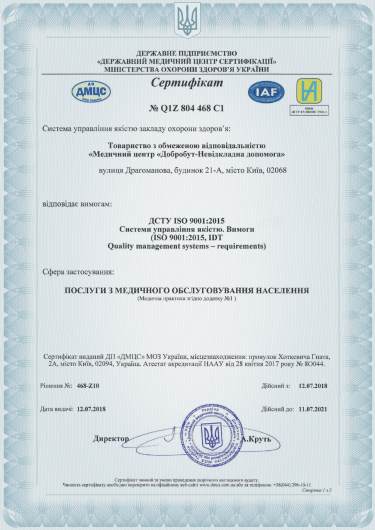
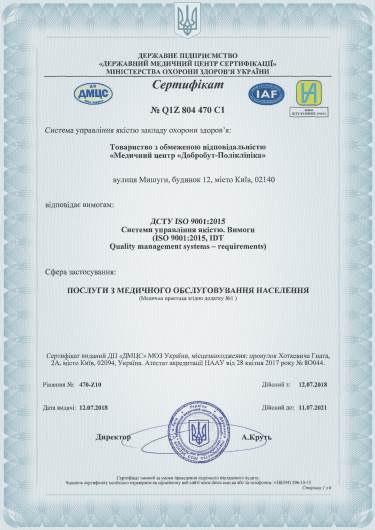
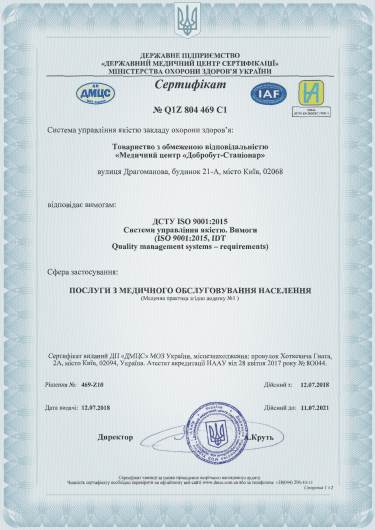
Accreditation certificates
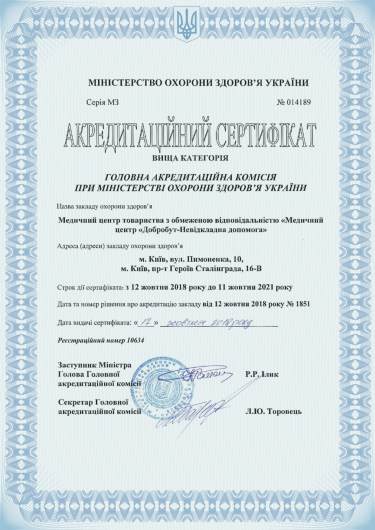
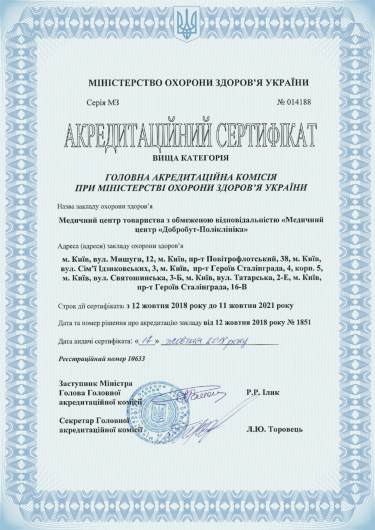

Licenses of medical practice
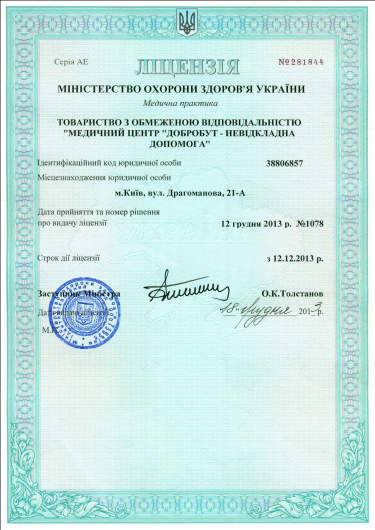
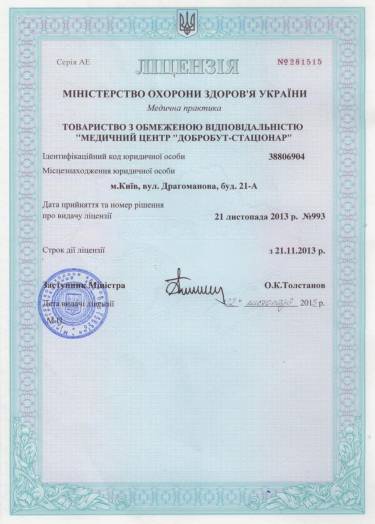






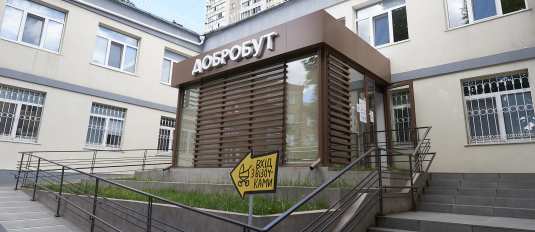






@2x.png)
@2x.png)
%402x.png)
%402x.png)
